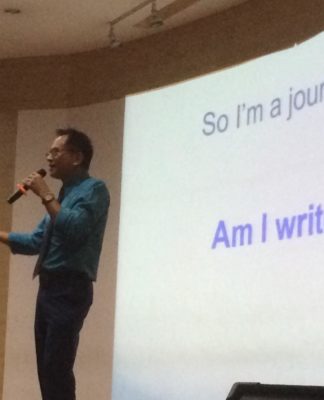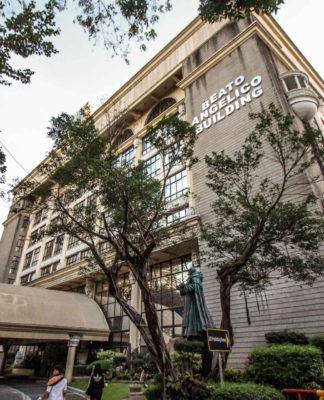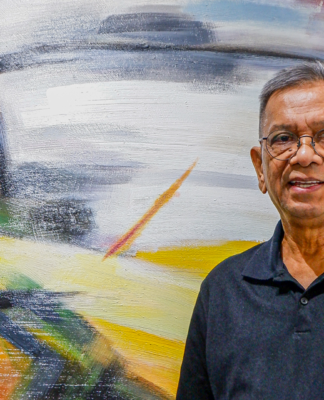THE UNIVERSITY will establish a committee to focus on the improvement of UST’s standing in the Quacquarelli-Symonds (QS) world university rankings, following its poor showing in recent years.
Maribel Nonato, director of the Office for Research and Innovation (ORI), said Rector Fr. Herminio Dagohoy, O.P. had decided to form a committee of administrators that would synchronize UST’s strategy to achieve better QS results.
“The move of one will certainly affect the other office kaya kailangan parallel, synchronized ang mga [strategies]. Father Rector will be calling a big [meeting with the] lead offices,” Nonato said.
UST landed on 500th place, the last spot, in the 2009 QS World Rankings. The University descended to the 501-550 bracket in 2010, then to the 601+ bracket in 2011 and 2012. Last year, UST slid to the 701+ bracket on the list of the top 800 universities in the world.
QS world rankings are based on five criteria, namely: academic reputation, employer reputation, faculty-to-student ratio, citations per faculty, international faculty ratio, and international student ratio.
The University did not fare well in the 2013 criteria except in employer reputation, where it ranked 350th with 45.1 points.
Meanwhile, in the QS Asian rankings, UST landed on the 141st spot this year. Last year, the University placed 150th, its lowest standing in five years.
The University’s Asian ranking has also declined. UST ranked 101st in 2010, 104th in 2011, and 148th in 2012.
The criteria for the QS Asian university rankings include: academic reputation (30 percent), employer reputation, faculty-student ratio, citations per paper, papers per faculty, and the proportions of international faculty, international students, student inbound exchange, and student outbound exchange, all with identical weights of 2.5 percent.
UST topped other Philippine schools in the citations per paper category for the third straight year with a score of 98.1, despite going down five notches overall to number 12.
In the international faculty criterion, UST also led Philippine universities, ranking 116th. UST slightly improved to 74th spot from 77th last year in the employer reputation indicator.
UST recorded better results in the international students (9.7 points), papers per faculty (2.1 points), and student inbound exchange indicators (2.2 points), placing 201st in these categories in the Asian survey.Nonato said the University had a “strong” research landscape, a necessary factor for UST to be known globally and thus boost its performance in QS’ academic reputation criteria.
“Kung baga hindi kasi pinag-uusapan ‘yung quantity. We may lag behind in terms of the number of publications but we have some good researches with high impact, meaning that paper has a lot of citations,” Nonato said.
This academic year, UST has a total of 113 researchers affiliated to the research institutes of the University namely: the Center for Health Research and Movement Science (CHRMS), Center for Religious Studies and Ethics (CRSE), the Research Center on Culture, Education, and Social Issues (RCCESI), and the Research Center for Natural and Applied Sciences (RCNAS), ORI data showed.
The highest number of researchers is in RCCESI, 57, while RCNAS has 43. CHRMS and CRSE have six and seven researchers, respectively.
UST produced 210 research papers between 2013 and 2014, ORI data showed. There were 123 research papers in 2013, 105 of which were published in indexed journals covered by QS in its research criteria. For 2014, 87 research papers have been produced so far, out of which 66 were published in indexed journals.
Indexed journals, the journals considered in QS surveys, are those cited by indexing firms such as Thomson Reuters, ScienceDirect, and Infocus, among others.
Secretary General Winston Cabading, O.P. told the Varsitarian that the University should improve its research component and education curriculum to become a “research university,” the highest university status as determined by the Commission on Higher Education. “[Some universities are trade universities] or professional universities. Ang intention nila is to produce graduates for the professional field,” Cabading said. “[O]ther than forming just simply professionals in their field, you also want the University to be research-oriented, which means `yung mga professionals mo ay driven by research.” Jerome P. Villanueva

















Now they are serious. I remember they keep on telling rankings don’t matter for several years. The truth is, we still cannot keep to world’s standards (or any Philippine university for that matter), Employers abroad still do not put that much value on our educational credentials. I realized this when i pursued higher studies abroad. UST specifically doesnt even have a large scale international exchange program. May the dismal rankings serve as a challenge. I am optimistic though. love UST
The faculty to student ratio is also a problem. This year, there are 30 freshmen sections in engineering.
I think that among the three major international university rankings (ARWU, Times and QS), THE World University Rankings are the most credible (and arguably the most influential). For one, they give more weight to more objective metrics (e.g. citations, industry income, and international outlook) rather than subjective indicators such as institutional reputation… or, cheerdance performance.
THE World University Rankings 2014-2015, which stand up to more academic scrutiny than QS or ARWU, was published last 01 October 2014 (http://www.thewur.com/). For the record, none of the so-called “Big Four” Philippine universities have made it to this list since 2009; and I am not expecting to see one next year.
Some academics dismiss these rankings to be irrelevant and biased… It’s really a lack of knowledge, if not bitterness, to say that these rankings are UK- or US-biased as other international university rankings initiated by other countries (e.g. CWUR (Saudi Arabia), HEEACT (Taiwan); High Impact Universities (Australia), Leiden Ranking (Netherlands), U-Multirank (EU), or a ranking from a reputable database (e.g. SCImago Institutions Rankings by Scopus) do not paint a different picture at all. These rankings, regardless of who initiated them, consistently reveal the poor performance of Philippine universities. Instead of criticising these rankings (while we gaze up longingly on the world’s top universities), why don’t we instead learn from the winners on how we could brush up our global image.
Whether we accept it or not, international university rankings will reflect the disparity in quality of education between a third-world national university and a post-1992 research university in the UK (e.g. University of Hertfordshire).